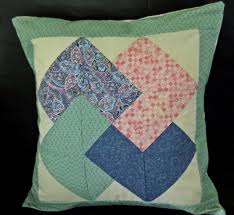Much of the data about the miracle of 19 in the Quran is like diamonds. However, you can encounter people who try to augment the number of miracles by presenting some mathematical facts as miracles. Two kinds of people confuse diamonds and glass. The one who seeks an opportunity to deny the miracle of 19 in the Quran picks up only the splinters of glass from the mixture and says, “They are but splinters of glass, they are worthless.” However, a diamond has its own value even though it may be mixed with splinters of glass. One who denies the value of a diamond neither does harm to the diamonds nor makes these diamonds worthless. The value of all the examples about the miracle of 19 we give in this book are not equal to one another. We tried to exclude worthless splinters, yet some of our examples may be like crystals beside these valuable diamonds. Please do not forget that not every diamond has the same value but that, rather, each diamond has a different value. For instance, the symmetric table with four parts about the names of God is worth a fortune.
As we will mention soon, the word “God” (Allah) is used 2698 (19×142) times in the Quran. This is a very important point in the scheme of the 19-based system. Furthermore, if we examine the first verses of all the suras in the Quran we see “God” mentioned 42 times. If we write 1 and 42 together, we have the number 142 and this number is the coefficient of the occurrence of the word “God” in the Quran. The second proof is not such a fundamental one as the occurrence of the word “God,” that is, 2698 (19×142). Yet we should not ignore these kinds of signs because they support the main idea. This fact does not make the main point insignificant, but on the contrary supports it. However, trying to present the perfection of the Quran with only the second kind of signs would be a product of ill-intention. These secondary signs are not like splinters of glass, nor are they of the same value as the ideas they support.
We should be careful not to give an opportunity to people who are ill-intentioned when we speak about the miracle of 19. (We excluded many examples that are like crystals.) We should state that no two samples are equal and some samples of inferior value do not damage the main value of the miracle of 19.
People unaware of probability calculations can present the ordinary signs as miracles. On the other hand, to present the extraordinary signs and the coding system of the Quran as an ordinary event cannot be considered a good intention. It is wrong to mix glass with diamonds and it is even worse to pretend that diamonds are glass.
